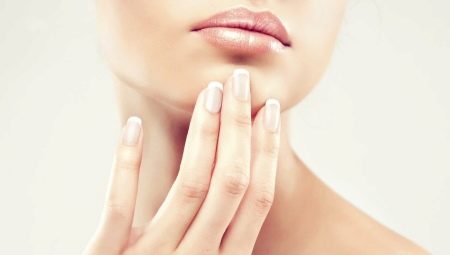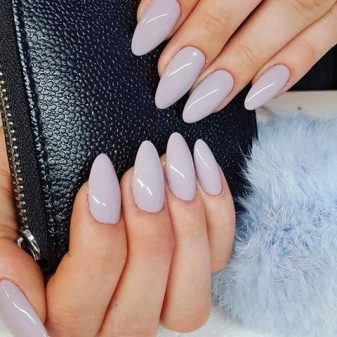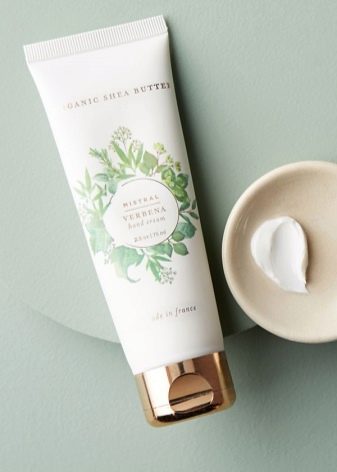How long do extended nails last and what does it depend on?

One of the attributes of a well-groomed woman is neat nails with a good manicure. This is especially true for those women whose work involves frequent hand manipulation. Unfortunately, not everyone can boast of strong healthy nails with a beautiful shape. Many women have certain problems with the growth rate of their nails, they are short, brittle and flaking. In some cases, neither better quality varnishes, nor medical masks or baths help.
In these situations, nail extension with artificial materials can come to the rescue. Such a manicure is stronger and more durable, and a large number of various decorative materials allows you to get both the effect of natural nails and an unusual bright design.


The term of socks of extended nails
Not a single professional nail technician can predict how long the extended nails can hold. This period depends on many factors, which include not only the level of the master and the quality of the materials, but also the vital activity of the woman herself. Most often, salon clients are advised to carry out a correction every 2 weeks. Not everyone can afford it, since the procedure takes at least 2 hours, and you also have to pay a considerable amount for it. Some clients manage to go without correction for 3 or even 4 weeks after building up, while the majority have to remove the material at home due to chips or deformation of the material.
There are two main types of nail extension: on tips and on forms. Today, the first option is already a thing of the past, as less convenient and more harmful to nails and skin. Special plastic tips were glued with glue to the nail plate and to the skin around it, which had a negative effect on the tissue. Such a manicure did not look natural, it was rather fragile and short-lived, resembling ordinary glued nails.

The second option, on the contrary, does not lose its relevance to this day. In this case, an artificial nail plate is formed from a plastic material on a special paper form installed near the edge of the nail. After formation, the material is baked under ultraviolet rays, which makes it hard. The finished marigold is filed to the desired shape and decorated with decorative coatings and accessories.
At various fashion shows and special manicure contests, you can find extensions with unusual materials. This can be resin, cloth, or special varnishes. Even the most daring masters do not give guarantees that such a manicure will last at least a couple of days, preferring more traditional methods. Specific wear periods exist for gel and acrylic coatings.


Gel
The structure of the gel is very similar to the structure of the nail plate, which allows the tissues to breathe and absorb moisture even after the material is baked. Such a manicure looks as natural as possible, it is smooth and even. When choosing quality materials and an experienced specialist, the first detachments may appear only in 3-4 weeks. And the period of wear itself depends on the growth rate of the woman's nail and ranges from 4 to 5 weeks. The only drawback of this material is the difficulty of removing it at home. Unlike acrylic, it will have to be cut down in parts or use the services of a professional.


Acrylic
Acrylic coatings usually do not last as long as gel coatings due to their less dense structure. However, every year manufacturers of such gels are launching products of ever higher quality on the market, which makes it possible to increase the wear life of acrylic nails. Due to the high porosity and fragility of the material, the longest wearing period is one month. But most often the nails require correction after 2-3 weeks.
Unlike gel, this coating is easier to remove at home using foil, cotton pads and a special liquid. To do this, you need to wet the pieces of cotton wool with a solvent, put them on the nail and wrap everything with a thick layer of foil. After 15–20 minutes, the coating can be easily removed with an orange stick or a toothpick. Moreover, unlike gel, acrylic is a strong allergen and can cause irritation and inflammation on the nails and skin. Before doing extensions at home or in the salon, it is better to test for an allergic reaction.


What affects strength?
There are many different factors that affect the quality and durability of a coating. All of them can be divided into several groups, depending on whether they are external or internal.
Individual characteristics of the client
The durability of both gel and acrylic manicure depends primarily on the client's nail growth rate. The faster the plate grows back, the sooner you will have to go for a correction or completely remove the coating. Correction is required not only for the sake of aesthetics, but also in order for the artificial nail to be attached to a larger area.
The same group includes the thickness of the nail plate, its evenness and health. Delaminated fabrics are worse attached to the coating, form internal voids, which contributes to greater fragility of artificial manicure.


Quality of materials and procedures
If a master or a salon saves on materials, you should not expect miracles from building. It is best to choose mid-priced offers, ignoring overly large discounts. The low price may indicate the inexperience of the manicure specialist or poor quality materials.
Drying time, coating thickness, nail treatment before and after application of the material - all this directly affects the wear life of an artificial nail. In the event that a woman prefers to carry out building on her own at home, she needs to take a couple of lessons from a professional or study several master classes on the Internet.


Influence of the environment
Even simple weather conditions can affect gel or acrylic finishes. For example, winter frosts somewhat shorten the period of wearing extended nails. Especially if the woman is not wearing gloves. Strong impacts may cause the coating to crack, for example, from the banging of fingernails on the keyboard keys while working at the computer. Washing dishes by hand, washing clothes, going to the pool or sauna - any prolonged contact with moisture and cleaning agents negatively affects the gel and acrylic.


Can I extend it?
If it is almost impossible to change the individual characteristics of nails, then the impact of the environment and the quality of the procedure can and should be controlled. There are several rules to follow to maximize the life of your artificial turf.
- Do not put too much length of the free edge, otherwise such a nail will quickly break or begin to bend.
- Before applying and correcting a manicure, you must refrain from contact with fatty and oily substances at least for 24 hours. Both gel and acrylic will fit better on a dry, fat-free plate.
- After a manicure, do not visit the sauna, solarium or pool for 2-3 days. Also, too long contact with water and hot baths are undesirable.


- All household chores will have to be done with thick rubber gloves so that cleaning agents and brushes do not damage the coating. You do not need to scratch and pick anything with extended nails, as there is a tool for everything.
- Cracks in the nail can appear with a sharp temperature drop. Having entered the warmth from the cold, you should not immediately wash your hands with hot water or take a mug of hot tea. It's best to just wait 5-10 minutes for your hands to warm up.
Caring for the artificial turf is simple enough; any nourishing hand cream will do. You should not make various acidic masks or hand baths, as they can spoil the appearance of the coating. If all the rules are followed, the quality of the materials is beyond doubt, and the manicure master knows his job, then the coating will last at least 3-4 weeks without bringing any trouble.


For information on how to care for extended nails, see the next video.








